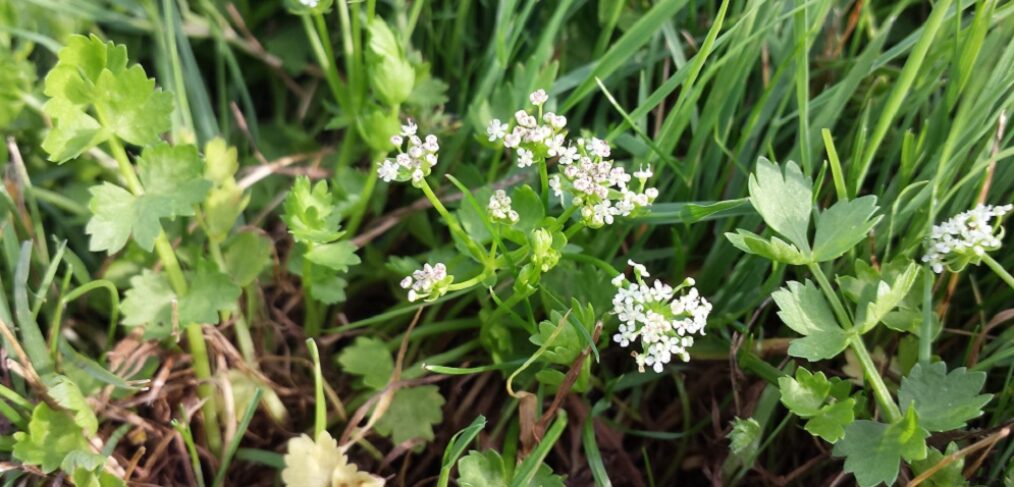
species of the week #96 – creeping marshwort
The creeping marshwort is a so-called responsibility species in Germany. This means that its distribution is concentrated in Germany, even though it was once found throughout Europe. In the meantime, the creeping marshwort is threatened with extinction throughout Europe and is usually in a poor state of conservation. However, it is also highly endangered in our country. The last occurrence in Rhineland-Palatinate in Ingelheim became extinct in 2004. The two largest German occurrences are found in the Danube region and in the foothills of the Alps.
| Distribution status in Rhineland-Palatinate | extinct |
| Remaining occurance | Brandenburg, Bayern |
| Last sighting in Rhineland-Palatinate | 2004 Ingelheim |
| Habitat | Damp banks and meadows with open areas |
| Threat | Abandonment of land use, intensive agriculture, drainage |
Creeping marshwort is native to many European countries and loves wet feet, whether along waterways, in wet meadows or along paths. It finds these conditions mainly in the temporarily flooded area of standing or slowly flowing waters, but also in ditches, wet meadows, flood lawns or wet paths.
As a typical pioneer plant, it often grows where “gaps” in the plant cover occur naturally or are caused by humans and where sufficient light is available. Thus, recurring short-term disturbances, for example by grazing, are necessary for its preservation. Creeping marshwort is often found in pasture or mowed pasture areas, but also in playgrounds and lawns around swimming or boat docks.
Creeping marshwort is an evergreen but low-growing umbellifer that can quickly colonize new areas. This actually gives it a survival advantage. Plants that live in water or are frequently flooded reproduce mainly vegetatively, i.e., by stolons, while land forms of creeping marshwort usually reproduce by seed. The ability to form root-bearing stolons enables creeping marshwort to quickly conquer newly created habitats and establish comparatively large stands in a short time. In addition, sections severed by injury (e.g., treading or mowing) take root upon contact with the soil. However, creeping marshwort is quickly overgrown by other plants because of its low growth habit.
Creeping marshwort has another ability that strengthens its resilience: its seeds are very long-lived and can survive adverse environmental conditions underground to germinate again after several years. This allows the species to reappear when suitable growing conditions occur. Therefore, suitable growing conditions should also be restored to areas with former occurrences of creeping marshwort, as stands can be reactivated. However, there is a lack of accurate knowledge on how long the seeds can survive in the soil.
Policy Need:
– Renaturalization of river banks
– Protection of riparian strips
– Promotion of conversion from intensive to extensive grazing animal husbandry
– Strengthening of existing extensive grazing livestock
Click here for more exciting species of the week
Photo By Stefan.lefnaer – Own work, CC BY-SA 4.0, https://commons.wikimedia.org/w/index.php?curid=62130
